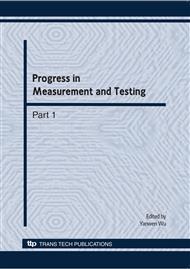[1]
http: /answers. yahoo. com/question/index?qid=20081008044954AAmjDab, retrieved on Sep. 16, (2007).
Google Scholar
[2]
K. Joshi, S. Sarker, and S. Sarker, Knowledge transfer among face-to-face information systems development team members: Examining the role of knowledge, source, and relational context, in Proceedings of the 37th Hawaii International Conference on System Sciences, (2004).
DOI: 10.1109/hicss.2004.1265596
Google Scholar
[3]
Stankosky, M., editor (2004), Creating the Discipline of Knowledge Management: The Latest in University Research, Butterworth-Heinemann, ISBN 0-7506-7878-X.
Google Scholar
[4]
M. Alavi and D. E. Leidner, Knowledge management and knowledge management systems - conceptual foundations and research issues, MIS Quarterly, vol. 25, no. 1, (2001).
DOI: 10.2307/3250961
Google Scholar
[5]
Kekang He, Wenguang Li, Educational Technology, The press of Beijing Normal University, Beijing, (2002).
Google Scholar
[6]
Tom Finneran , A Component-Based Knowledge Management System, The Data Administration Newsletter, June 1, (1999).
Google Scholar
[7]
Feigenbaum, E., and P. McCorduck. (1983). The Fifth Generation. Reading, MA: Addison-Wesley.
Google Scholar
[8]
Kendal, Simon & Creen, Malcolm (2007). An Introduction to Knowledge Engineering. Springer. ISBN 978-1-84628-475-5. OCLC 70987401.
Google Scholar
[9]
Negnevitsky, Michael (2005). Artificial Intelligence: A Guide to Intelligent Systems. Addison Wesley. ISBN 0-321-20466-2.
Google Scholar
[10]
Russell, Stuart J.; Norvig, Peter (2003), Artificial Intelligence: A Modern Approach (2nd ed. ), Upper Saddle River, NJ: Prentice Hall, ISBN 0-13-790395-2, http: /aima. cs. berkeley. edu/}.
DOI: 10.1017/s0269888900007724
Google Scholar
[11]
http: /www. answers. com/%20knowledge%20engineering#Knowledge_engineering_principles, retrieved on Feb. 17, (2009).
Google Scholar
[12]
http: /www. km-forum. org/kmvske. htm. retrieved on Mat. 11, (2009).
Google Scholar


